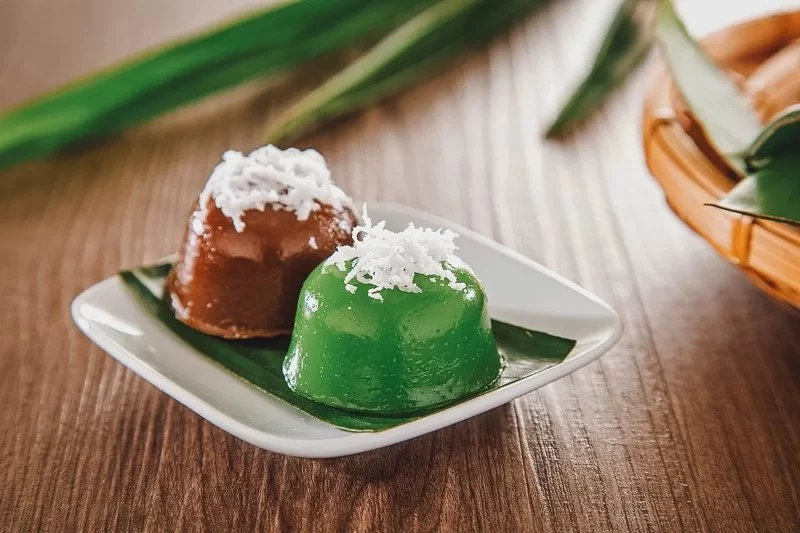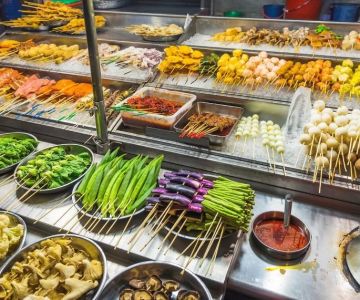
- 1 - what-defines-the-best-malaysian-desserts
- 2 - the-signature-ingredients-behind-malaysian-sweets
- 3 - classic-malaysian-desserts-you-cant-miss
- 4 - street-markets-and-festivals-a-sweet-paradise
- 5 - modern-spins-on-traditional-malaysian-desserts
- 6 - why-malaysian-desserts-deserve-global-attention
1. What Defines the Best Malaysian Desserts?
Malaysia’s desserts are a reflection of the country’s cultural tapestry, blending Malay, Chinese, and Indian culinary traditions. But what exactly makes the best Malaysian desserts so unforgettable? It’s the use of fresh, local ingredients like coconut milk, palm sugar (gula Melaka), pandan leaves, and sticky rice—all of which combine to create uniquely textured, fragrant, and colorful treats.
Unlike Western desserts that often rely on heavy creams and chocolate, Malaysian sweets tend to balance sweetness with savory or herbal undertones. It's a sensory journey. One moment you're enjoying the icy crunch of ais kacang; the next, you're savoring the chewy richness of kuih lapis, layer by layer. It's these subtle complexities that keep travelers and locals alike constantly craving more.
2. The Signature Ingredients Behind Malaysian Sweets
To understand the soul of Malaysian desserts, we have to look at the ingredients:
- Coconut milk: Creamy, rich, and present in almost every dish, coconut milk forms the base of countless desserts from cendol to bubur cha-cha.
- Palm sugar (Gula Melaka): A dark, smoky sweetener that gives Malaysian desserts their distinct flavor. It’s the reason why even the simplest dessert like sago pudding feels luxurious.
- Pandan: Known as the “vanilla of Southeast Asia,” pandan adds a floral aroma and bright green hue to treats like pandan chiffon cake or kuih talam.
Combined with glutinous rice, mung beans, sweet corn, and even durian, these ingredients offer a repertoire of textures and tastes that are unmatched globally. Ask any Malaysian abroad what they miss most, and “kuih” is usually near the top of their list.
3. Classic Malaysian Desserts You Can’t Miss
One can’t speak about the best Malaysian desserts without highlighting these standouts:
3.1 Cendol
This icy green noodle dessert is a staple on hot afternoons. Made from pandan-flavored rice flour jelly, coconut milk, and palm sugar syrup over shaved ice, cendol is both cooling and satisfyingly sweet.
3.2 Ais Kacang
Often referred to as ABC (“air batu campur”), ais kacang is a mountain of shaved ice topped with sweet corn, red beans, jelly bits, and condensed milk. It’s the Malaysian answer to snow cones—but way more exciting and layered.
3.3 Kuih Seri Muka
This two-layered dessert features glutinous rice on the bottom and a green pandan custard on top. Smooth, sticky, fragrant—it's a sensory marvel in every bite.
3.4 Dodol
Made during festive seasons, this sticky toffee-like sweet is slow-cooked over hours. Its preparation is a communal affair, with family and neighbors gathering to stir the pot together. The result? A gooey, rich, smoky bite that melts in your mouth.
4. Street Markets and Festivals: A Sweet Paradise
Some of the best Malaysian desserts can only be found in bustling night markets like Jalan Alor in Kuala Lumpur or Gurney Drive in Penang. These street vendors often serve family recipes passed down for generations, each with a secret twist. During Ramadan bazaars, rows upon rows of colorful kuih take center stage—an edible rainbow that offers more than just taste; it tells a story.
One traveler, Mike R. from Chicago, shared, “I was backpacking through Southeast Asia when I stumbled into a night market in Ipoh. A vendor handed me a green and white slice of kuih talam. I’d never tasted anything like it—soft, slightly salty, and just sweet enough. I ended up buying a dozen and brought them all the way back to my hotel.”
5. Modern Spins on Traditional Malaysian Desserts
Contemporary chefs in Malaysia are giving a facelift to time-honored desserts. In urban cafes across Kuala Lumpur, you’ll find deconstructed ais kacang in cocktail glasses, or onde-onde cake layered with gula Melaka syrup and coconut frosting. These creative twists are bringing Malaysian sweets into the global spotlight, without sacrificing the nostalgic flavors that define them.
Some of these innovations are now appearing in U.S. fusion restaurants, introducing American palates to Southeast Asian flavor profiles in approachable formats. It’s not uncommon to see kaya toast turned into crème brûlée or cendol-inspired ice creams appearing in gourmet dessert bars.
6. Why Malaysian Desserts Deserve Global Attention
The best Malaysian desserts aren’t just delicious—they’re cultural ambassadors. They tell stories of migration, tradition, family, and innovation. For travelers exploring Southeast Asia, experiencing these sweets is as important as visiting temples or tropical beaches.
If you’re planning a culinary journey through Malaysia or simply looking to expand your sweet tooth's horizons, head to UAK Travel. Their curated food tours and regional recommendations ensure you won’t miss a bite of the country’s most iconic desserts.







 Suraya Homestay4.0 (2 reviews)
Suraya Homestay4.0 (2 reviews) Galeri Tokoh Maran/Galeri 3D Maran4.0 (7 reviews)
Galeri Tokoh Maran/Galeri 3D Maran4.0 (7 reviews) Koffee Kulture GBK4.0 (12 reviews)
Koffee Kulture GBK4.0 (12 reviews) Kedai Makan Kat Tie3.0 (13 reviews)
Kedai Makan Kat Tie3.0 (13 reviews) Afyana Homestay5.0 (1 reviews)
Afyana Homestay5.0 (1 reviews) Genting gpo personal shopper5.0 (1 reviews)
Genting gpo personal shopper5.0 (1 reviews) Exploring the Unique Designs of Mosques in Malaysia: A Journey Through Islamic Architecture
Exploring the Unique Designs of Mosques in Malaysia: A Journey Through Islamic Architecture Exploring the Architectural Beauty of Mosques in Malaysia: A Journey Through Islamic Architecture
Exploring the Architectural Beauty of Mosques in Malaysia: A Journey Through Islamic Architecture Visiting Malaysia’s Most Famous Mosques During Eid: A Unique Cultural Experience
Visiting Malaysia’s Most Famous Mosques During Eid: A Unique Cultural Experience How to Get to the Famous Mosques in Kuala Lumpur by Public Transport: A Complete Travel Guide
How to Get to the Famous Mosques in Kuala Lumpur by Public Transport: A Complete Travel Guide Discover the History of Masjid Titiwangsa in Kuala Lumpur: A Cultural and Architectural Gem
Discover the History of Masjid Titiwangsa in Kuala Lumpur: A Cultural and Architectural Gem Top Mosques to Visit During Ramadan in Malaysia: A Traveler's Guide
Top Mosques to Visit During Ramadan in Malaysia: A Traveler's Guide